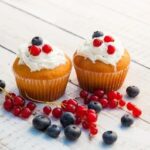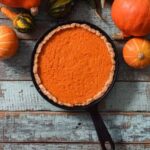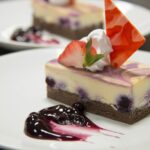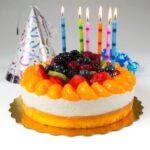Are you wondering how to make whipped cream to decorate cakes? Whipped cream is a versatile and essential component of cake decoration, offering a light and creamy texture that adds a touch of elegance to any dessert.
Whether used as a simple topping, piped borders, or intricate designs, whipped cream allows for endless creativity in cake decorating. In this article, we will explore the basics of making whipped cream at home, from choosing the right ingredients to perfecting the whipping technique and incorporating different flavors.
When it comes to creating beautifully decorated cakes, whipped cream is a go-to ingredient for many bakers and pastry chefs. Its smooth and airy texture makes it ideal for piping delicate decorations or spreading a luscious layer over cakes. The versatility of whipped cream also allows for endless possibilities in cake design, from classic rosettes and borders to more intricate patterns and shapes.
In the following sections, we will delve into the fundamentals of making whipped cream, covering everything from selecting the right type of cream to exploring different flavor options and stabilizing techniques. Whether you are new to cake decorating or looking to enhance your skills, understanding how to make whipped cream will open up a world of creative possibilities for your culinary creations.
The Basics of Whipped Cream
Whipped cream is a versatile and delicious addition to any cake decoration, adding a light and airy texture as well as a touch of sweetness. Making whipped cream at home is simple and requires just a few key ingredients and tools. In this section, we will explore the basics of whipped cream, including the key ingredients and equipment needed to achieve the perfect consistency for cake decorating.
Key Ingredients
The primary ingredient for making whipped cream is heavy cream or whipping cream, which contains a high fat content necessary for achieving the desired fluffy texture. Additionally, sugar can be added to sweeten the whipped cream, along with flavorings such as vanilla extract or cocoa powder for added taste. These basic ingredients are readily available in most grocery stores and are essential for creating homemade whipped cream.
Essential Equipment
To make whipped cream at home, it’s important to have the right equipment on hand. A handheld electric mixer or a stand mixer with a whisk attachment is ideal for whipping the cream to the desired consistency. Additionally, using a chilled mixing bowl and beaters can help speed up the process and ensure that the whipped cream holds its shape. It’s also helpful to have a rubber spatula for gently folding in any additional flavorings or stabilizers.
Ultimately, understanding the key ingredients and having the proper equipment are essential for successfully making whipped cream at home. With these foundational components in place, anyone can create delicious whipped cream to decorate cakes and other desserts with ease.
By understanding these basics, aspiring bakers can confidently move on to explore techniques for whipping cream perfectly every time, choosing appropriate creams and flavoring options, stabilizing whipped cream for decorating purposes, troubleshooting common issues that may arise during preparation of this delicate frosting, sharing creative ideas for using whipped cream to ornate cakes effectively while experimenting with different methods of applying it in creative ways.
With all these tips combined, individuals will be well-equipped to add their personal touch through homemade fluffy whip to their cake decorations.
Choosing the Right Cream
When it comes to making whipped cream to decorate cakes, choosing the right type of cream is essential to achieve the perfect texture and flavor. There are several options available, each with its own fat content and suitability for whipping. Here’s a breakdown of the different types of cream suitable for making whipped cream:
1. Heavy Cream: Also known as heavy whipping cream, this cream has the highest fat content, typically around 36-40%. Due to its high fat content, heavy cream whips up beautifully and holds its shape well, making it ideal for decorating cakes and pastries with intricate designs.
2. Whipping Cream: With a slightly lower fat content than heavy cream (around 30-35%), whipping cream is also suitable for making whipped cream for cake decorations. It whips up lighter and smoother compared to heavy cream, and can be used for simpler designs and decorations on cakes.
3. Double Cream: In some regions, double cream is available as an option for making whipped cream. Double cream has an even higher fat content than heavy cream, with about 48% fat. This makes it incredibly rich and luxurious when whipped, resulting in a decadent topping for cakes.
When choosing the right type of cream for making whipped cream to decorate cakes, consider the level of richness desired and the intricacy of the decoration. It’s important to note that regardless of the type of cream chosen, it should be cold before whipping in order to achieve the best results.
Ultimately, experimenting with different types of creams can help you discover your preferred choice for creating beautifully decorated cakes using homemade whipped cream.
The Perfect Whipping Technique
Whipping cream is an essential skill for any cake decorator, as it is a versatile and delicious way to add texture and flavor to cakes. The perfect consistency of whipped cream is light, fluffy, and holds its shape when piped onto cakes. To achieve this, it’s important to follow the right whipping technique.
To get started, you will need a bowl (preferably metal as it retains cold better), chilled beaters or whisk, and cold heavy cream with at least 36% fat content. Using these ingredients will ensure that the cream whips up well and holds its structure.
Next, pour the heavy cream into the chilled bowl and begin whisking on low speed to avoid splattering. As the cream thickens slightly, increase the speed until soft peaks form. Be mindful not to over-whip the cream as it can turn into butter if beaten for too long. To prevent over-whipping, keep a close eye on the texture of the whipped cream and stop beating once it reaches stiff peaks.
Additionally, adding a small amount of powdered sugar during whipping can help stabilize the whipped cream and give it a slightly sweet flavor without making it too sweet. This step should be done gradually after soft peaks form but before reaching stiff peaks.
Using these techniques will result in perfectly whipped cream that is ideal for decorating cakes with rosettes, borders, or other creative designs.
| Whipped Cream Essentials | Technique Tips |
|---|---|
| Metal bowl | Use chilled bowl and beaters to retain cold better |
| Cold heavy cream | Minimum 36% fat content; ensures proper whipping consistency |
| Powdered sugar | Add gradually to stabilize whipped cream without making it too sweet |
Flavoring Whipped Cream
Vanilla
One of the most popular flavors for whipped cream is vanilla. To incorporate this classic flavor into your whipped cream, simply add a small amount of vanilla extract to the cream before whipping it. Alternatively, you can use vanilla bean paste for a more intense vanilla flavor and the added speckles of vanilla bean throughout the cream. Be sure to taste as you go to adjust the amount of vanilla to your preference.
Cocoa
For a rich and indulgent whipped cream, incorporate cocoa powder into the cream before whipping. Start with a small amount of sifted cocoa powder and gradually increase if a stronger chocolate flavor is desired. To prevent lumps in the whipped cream, it is important to sift the cocoa powder before adding it to the cream and ensure it is well incorporated.
Fruit Extracts
Fruit-flavored whipped creams can add a refreshing twist to cake decorations. Incorporate fruit extracts such as lemon, orange, or raspberry by adding a few drops to the cream before whipping. It is important not to add too much liquid when using fruit extracts, as this can affect the stability of the whipped cream. Consider adding zest from citrus fruits for added flavor and natural color.
By exploring different flavor options for whipped cream, such as vanilla, cocoa, and fruit extracts, you can elevate your cake decorations and create unique and delicious desserts that are sure to impress your family and friends. The key is to experiment with different flavors in moderation and adjust them according to your taste preferences while ensuring that they do not compromise the texture or stability of the whipped cream.
Stabilizing Whipped Cream
One method for stabilizing whipped cream is by using gelatin. This technique involves blooming unflavored gelatin in cold water, then heating it until dissolved before adding it to the whipped cream. The gelatin helps to maintain the structure of the whipped cream and prevents it from melting at room temperature, making it ideal for intricate decorations that require precision and stability.
Another option for stabilizing whipped cream is to incorporate cornstarch into the mixture. By creating a slurry with cornstarch and water and then adding it to the cream while whipping, the cornstarch acts as a thickening agent that helps the whipped cream maintain its shape for longer periods. This method is particularly useful when working with whipped cream in warm temperatures or when decorating cakes that need to be displayed for extended periods.
Lastly, powdered sugar can be used as a stabilizer for whipped cream. The fine texture of powdered sugar helps absorb excess moisture in the whipped cream, preventing it from becoming runny or losing its shape over time. Incorporating powdered sugar into the whipping process not only adds sweetness but also contributes to a more stable and long-lasting whipped cream suitable for intricate cake decorations.
Incorporating any of these stabilizing methods into your whipped cream recipe will ensure that your cake decorations remain beautiful and intact throughout your special event or celebration. Experimenting with different stabilization techniques can help you discover which method works best for your specific cake decorating needs.
Decorating With Whipped Cream
Whipped cream is a versatile and delicious way to add a touch of elegance and flavor to cakes. But beyond just spreading it on top, there are various creative techniques to use whipped cream for cake decoration.
Piping techniques are a popular choice for creating intricate designs, such as floral patterns or written messages, on cakes. By using different piping tips – such as star tips, petal tips, or round tips – you can achieve various decorative effects and textures with whipped cream.
Rosettes are another charming way to elevate the appearance of a cake with whipped cream. These delicate swirls resemble the petals of a flower and can be used to border the edges of a cake or as an embellishment around the top. With a steady hand and some practice, rosettes can enhance the overall look of the cake and give it an elegant finish.
In addition to piping techniques and rosettes, using whipped cream to create borders is also a great way to add visual appeal to cakes. Borders made from whipped cream can range from simple lines or dots encircling the top or bottom edge of the cake to more elaborate designs involving several layers or patterns.
Whether you’re decorating a birthday cake, wedding cake, or any other special occasion dessert, incorporating different borders made with colorful whipped cream can help make your creation truly stand out.
Now that you’ve learned about these creative ideas for using whipped cream to decorate cakes, including piping techniques, rosettes, and borders, it’s time to put that knowledge into practice. Experiment with different designs and flavor combinations to discover what works best for your personal style and specific cake decorating needs.
| Technique | Description |
|---|---|
| Piping Techniques | Create intricate designs with different piping tips |
| Rosettes | Delicate swirls resembling flower petals for an elegant finish |
| Borders | Range from simple lines or dots encircling the edges of cakes |
Troubleshooting Common Issues
Whipped cream is a versatile and delicious addition to any cake, but it can sometimes be tricky to perfect. Common issues encountered when making whipped cream include deflating and curdling, which can be frustrating for novice bakers. However, with the right tips and techniques, these problems can easily be rectified to ensure that your whipped cream turns out light, fluffy, and perfectly smooth.
One common issue when making whipped cream is deflating, which occurs when the air bubbles incorporated during whipping collapse, resulting in a dense and heavy texture. To prevent this from happening, it is essential to use cold utensils and a chilled bowl when whipping the cream. Additionally, adding a stabilizer such as gelatin or cornstarch can help maintain the stability of the whipped cream and prevent it from deflating.
Another common problem is curdling, which happens when the fat in the cream separates from the liquid during whipping, resulting in a grainy texture. To avoid curdling, it is crucial to not over-whip the cream. Over-whipping causes the fat molecules to clump together and separate from the liquid, leading to curdling. If curdling does occur, incorporating a small amount of unwhipped cream into the mixture can help smooth out the texture and salvage the whipped cream.
It’s important to remember that practice makes perfect when it comes to making whipped cream for cake decoration. By paying attention to details such as temperature and whipping technique, you can easily overcome common issues such as deflating or curdling to achieve beautiful and delicious whipped cream for your cakes.
Conclusion
In conclusion, mastering the art of making whipped cream is a valuable skill for any aspiring baker or cake decorator. Throughout this guide, we have highlighted the importance of whipped cream in cake decoration and its versatility in various cake designs. From choosing the right cream to perfecting the whipping technique and stabilizing the whipped cream, we have covered all essential aspects of creating the perfect whipped cream for decorating cakes.
It is important to note that while this guide provides a comprehensive overview of making whipped cream, there is always room for experimentation and creativity. Don’t be afraid to try different flavorings, piping techniques, and decorative ideas to elevate your cake decorating skills. Whether you are embellishing a simple birthday cake or creating an elaborate wedding confection, whipped cream offers endless possibilities for adding visual appeal and delicious flavor to your creations.
In essence, learning how to make whipped cream to decorate cakes opens up a world of opportunities for expressing your artistic flair and delighting those who indulge in your delectable creations. So go ahead, embrace the magic of whipped cream and let your imagination run wild as you embark on your journey to becoming a skilled cake decorator.
With practice, patience, and a touch of creativity, you’ll soon discover the endless wonders that whipped cream can bring to your confectionery masterpieces.
Frequently Asked Questions
How to Decorate a Cake With Homemade Whipped Cream?
Decorating a cake with homemade whipped cream involves first whipping heavy cream until soft peaks form. Then, add powdered sugar and vanilla extract for flavor. Once the whipped cream is made, use a piping bag to create designs on the cake.
How Do You Stiffen Whipped Cream for a Cake?
Stiffening whipped cream for a cake can be achieved by using gelatin or cornstarch. For gelatin, bloom it in cold water, then melt it and mix it into the whipped cream. If using cornstarch, mix it with a small amount of milk, heat it until thickened, then cool before folding into the whipped cream.
Which Whipping Cream Is Best for Cake Decoration?
The best whipping cream for cake decoration is heavy whipping cream with a high fat content. This type of cream will whip up well and hold its shape when decorating a cake. It’s important to chill both the bowl and whisk before whipping the cream for best results.

Welcome to my blog about home and family. This blog is a place where I will share my thoughts, ideas, and experiences related to these important topics. I am a stay-at-home mom with two young children. I hope you enjoy reading it! and may find some helpful tips and ideas that will make your home and family life even better!





